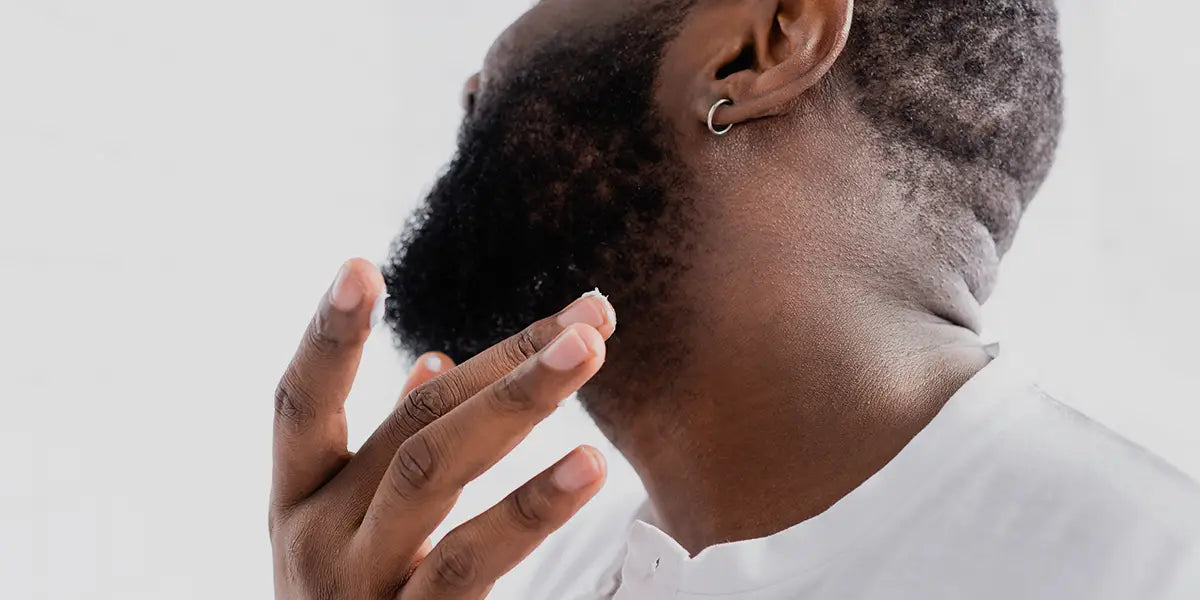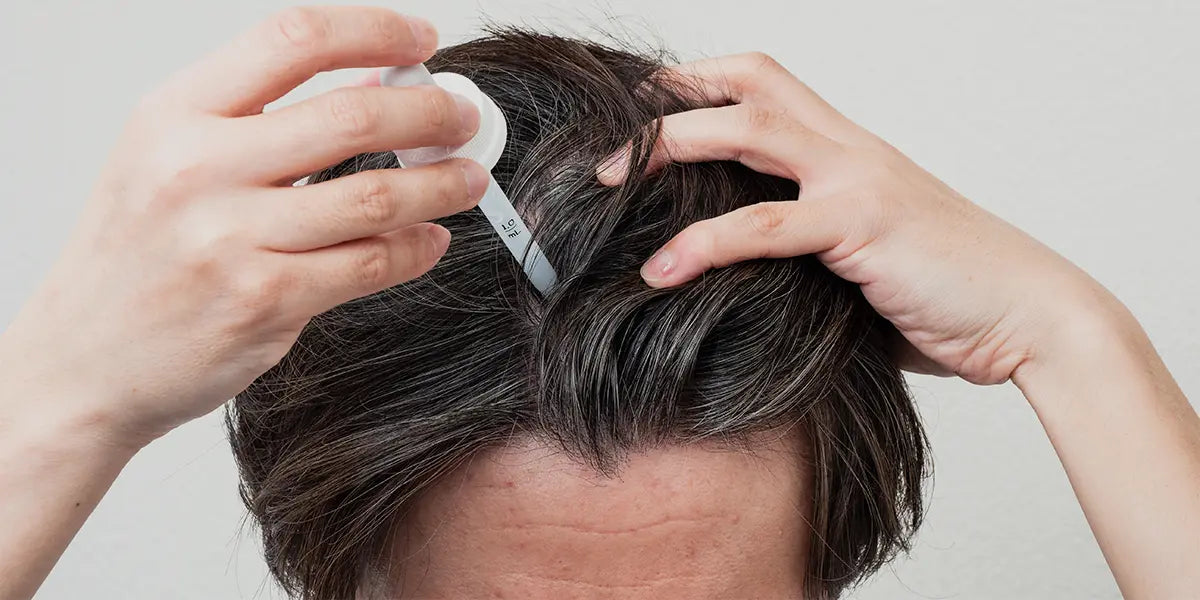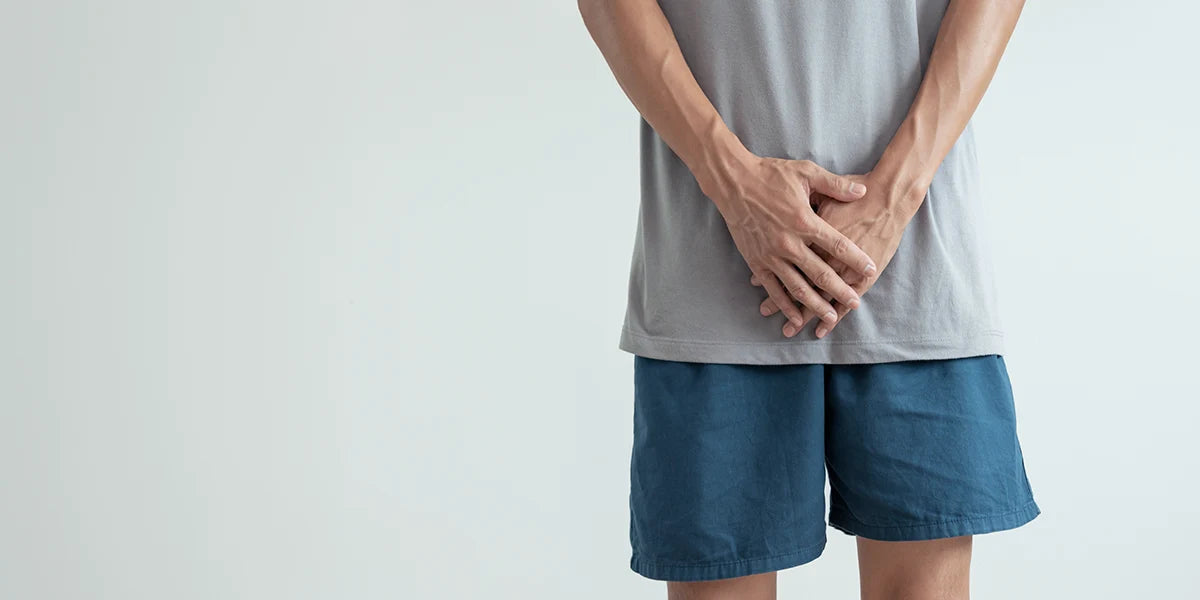Beard growth patterns are mainly determined by genetics, but that hasn’t stopped many men from seeking solutions for sparse or patchy facial hair. Minoxidil, a medication commonly used to combat hair loss on the scalp, has emerged as a possible facial hair growth aid. But before you reach for that bottle, let’s take a closer look at the potential effectiveness of using minoxidil for beard growth, safety considerations and other options for boosting beard growth.
What is minoxidil?
Minoxidil was originally formulated as an antihypertensive (high blood pressure) medication. The FDA has since approved topical minoxidil as a treatment for pattern hair loss in men and women and the medication is increasingly being prescribed orally off-label to manage this hair loss disorder.
Scientists are still trying to understand the mechanisms behind how minoxidil works, but it’s believed that minoxidil supports hair growth by enhancing blood circulation to hair follicles and promoting nutrient delivery. It may also stimulate hair follicles to spend more time in the active growth (anagen) phase of the hair growth cycle.
Does minoxidil work for beard growth?
Minoxidil has not been approved as a hair growth agent for facial hair and it’s not clear whether it’s an effective treatment for beard growth. One randomized study tested the efficacy of a 3% minoxidil solution applied twice daily over the course of sixteen weeks (Ingprasert, 2016). Forty-eight men were enrolled and the results showed that the average change in hair count compared to baseline was significant in the participants who received minoxidil compared to placebo. Although these results suggest that minoxidil may help grow beard hair, topical and oral minoxidil are not typically recommended by doctors to treat hair loss anywhere other than the scalp.
Why isn't minoxidil effective for beard growth?
Anatomically speaking, hair follicles on your scalp are different from those found anywhere else on the body. Compared to hairs on your head, beard hair is more sensitive to the effects of DHT (dihydrotestosterone). In fact, during puberty, DHT is needed to trigger the growth of facial hair (Martel et al., 2022). Later in life, elevated levels of this hormone at the scalp can actually cause balding in genetically predisposed people.
So, while DHT can cause some men to lose the hair on their head, it’s a necessary hormone for the normal growth and development of beard hair. Minoxidil doesn’t appear to directly affect androgen levels (including DHT), which may explain why it’s not as effective at treating hair loss in this part of the body. But it may still have a positive effect on circulation and boost hair growth.
Is using minoxidil for beard growth safe?
It’s important to remember that minoxidil has not been approved for use for beard growth, which means that its safety and efficacy for this specific application have not been formally studied. If you choose to use minoxidil to treat your facial hair, you should be aware that it is an off-label use. Additionally, the potential risks and types of side effects will depend on the formulation.
In general, many men can take topical minoxidil without experiencing serious side effects. But it has been associated with an increased risk of skin irritation or unwanted hair growth. In contrast, oral minoxidil may have an increased risk of systemic side effects such as cardiovascular effects (e.g., low blood pressure and irregular heartbeat) and fluid retention. This isn’t a complete list of possible side effects of minoxidil and we recommend consulting with a doctor before starting treatment with minoxidil.
What can I use instead of minoxidil for beard growth?
Alternative treatments for beard growth exist and include topical application of botanical extracts like peppermint oil and derma rolling (a procedure believed to trigger tissue growth and repair and promote collagen production), but scientific evidence supporting these alternatives is extremely limited. Beard transplant surgery may also be an option although it is an invasive procedure with its own set of risks (e.g. infection, transplant failure). Before considering any of these treatment options, we recommend reaching out to a healthcare professional to determine whether your facial hair concerns would benefit from any of these alternative treatments.
Minoxidil for beard growth: Takeaway
Minoxidil is a game-changer for people with the goal of growing thicker and healthier hair, but its effectiveness in treating beard hair hasn’t been established. There is some data that suggests it could promote hair growth in areas of the body other than the scalp, but these are off-label uses that have not been extensively studied and may come with safety risks. There are anatomical differences between hair follicles in these regions that may affect their responsiveness to certain medications. At the end of the day, we encourage people to seek professional guidance before initiating treatment with minoxidil or any other therapy intended to promote facial hair growth.




